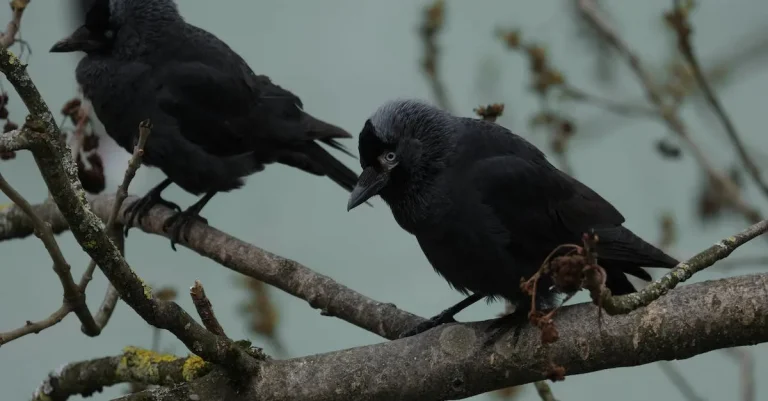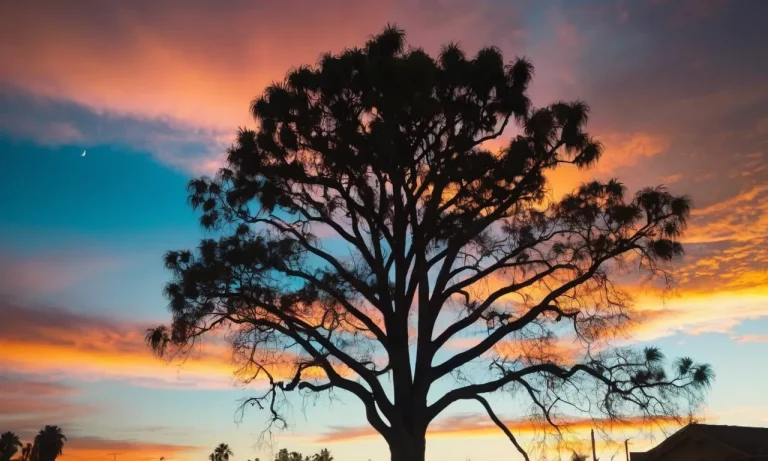Eagle feathers hold deep spiritual meaning in Native American cultures. If you’ve ever wondered “What do eagle feathers symbolize?” you’ve come to the right place.
In short, eagle feathers represent courage, honor, pride, wisdom, power, freedom and spiritual connection. But their symbolism goes much deeper.
In this comprehensive guide, we’ll explore the spiritual significance of eagles and their feathers to Native Americans, delving into traditions, rituals, teachings and more around these sacred elements of nature.
Eagles and Eagle Feathers in Native American Culture
Reverence for the Eagle
Eagles have an exalted status in Native American culture. Many tribes revere eagles as sacred messengers that carry prayers to the Creator or ancestral spirits. According to Native American mythology, the eagle played a role in bringing fire to humanity and teaching the first humans how to make tools and hunt.
Some tribes compare the eagle’s ability to soar high into the heavens to a spiritual leader’s ability to connect with the Creator. Just as the eagle can fly higher than any other bird, spiritual elders can access higher states of being.
Eagle Feathers and Native American Spirituality
Eagle feathers are central to many Native American religious, spiritual, and cultural ceremonies. They may symbolize qualities like bravery, purity, and connection with spiritual realms. Receiving an eagle feather is one of the highest honors in Native American culture.
For example, in many tribes, eagle feathers are presented by elders to young community members who have demonstrated great courage and moral strength. The feathers act as a reminder for the recipient to continue walking the “Red Road” of spiritual knowledge and righteousness.
Earning Eagle Feathers
Traditionally, a Native American person must earn the right to own eagle feathers through acts of service and commitment to their community. Specific requirements vary between tribes, but often involve accomplishments like becoming a veteran warrior, selflessly helping the tribe, or achieving extensive spiritual knowledge.
For many tribes today, eagle feathers are still reserved for those who demonstrate exceptional commitment to preserving Native culture. Elders may award feathers to young tribe members who learn traditional dances, mentor younger children in traditional ways, or devote themselves to Native causes like protecting sacred lands.
Symbolism and Meaning of Eagle Feathers
Courage and Bravery
Eagle feathers have long been seen as a symbol of courage and bravery in many Native American tribes. It was believed that the eagle, with its sharp vision and ability to soar high in the sky, represented a fearless heart and an unbreakable spirit.
Warriors would often be given eagle feathers to recognize their heroic deeds in battle or to provide spiritual protection. Even today, the gift of an eagle feather is considered one of the highest honors that can be bestowed.
Wisdom and Truth
The eagle feather also embodies wisdom and truth. Since the feather allows the eagle to take flight and survey wide landscapes, it signifies a higher perspective and greater insight. Native elders with exceptional knowledge and life experience would sometimes be honored with eagle plumes.
Eagle feathers are also used on sacred ceremonial staffs and headdresses to indicate spiritual awareness and connection to long-held tribal truths.
Freedom and Vision
Given its ability to soar through the skies without restraint, the eagle represents the spirit of freedom. Eagle feathers signify the ability to break free of barriers and rise above limiting beliefs to reach new heights.
They are also believed to boost clarity and enhance vision, allowing one to observe life from a broad vista. Many tribes include eagle feathers in sunrise ceremonies to celebrate the dawning of a new day full of hope and possibility.
Honor and Pride
Being given an eagle feather is a high honor that reflects pride in one’s conduct and achievement. Warriors would receive eagle plumes to recognize heroic acts or demonstrations of bravery. In other cases, tribe members would be presented special feathers to commemorate milestones like graduations, marriages, or community contributions.
Because eagle feathers were sacred and rare, they conveyed deep appreciation and respect from tribal leaders and elders when presented.
Spiritual Connection
Eagle feathers are believed to facilitate communication with spiritual realms and allow prayers to be better heard by ancestral spirits. Many tribes attach eagle plumes to sacred medicine bundles, staffs, and prayer wheels.
Shamans or medicine men will sometimes use the feathers in healing rituals to call in elevated energy and protection. Eagle feathers are also placed on graves and memorials to signify the flight of the soul to the spirit world.
Their connection to the heavens allows them to open portals to mystical realms and the presence of divine beings.
Ritual Uses of Eagle Feathers
Ceremonies and Rituals
Eagle feathers play an important symbolic role in many Native American ceremonies and rituals. They are seen as sacred gifts from the Eagle, which is revered in Native cultures as a messenger to the Creator (Warpaths to Peacepipes).
Eagle feathers are included in sun dance rituals, powwows, sweat lodges, vision quests, and coming of age ceremonies to connect participants with the divine and facilitate spiritual healing. Customs vary between tribes, but eagle feathers are handled with great respect.
Prayer and Meditation
Clutching an eagle feather is thought to amplify prayers. Feathers may be held during individual prayer for guidance, healing, or to give thanks. They are also used in group prayers during ceremonies and rituals.
The Lakota believe each feather houses a spirit, and waving a feather over burning cedar or sage helps prayers ascend to the Creator (National Parks Service).
Some tribes attach feathers to prayer sticks placed on altars. Meditating while holding feathers promotes mental clarity and vision.
Rites of Passage
Being gifted an eagle feather is a high honor. They may be awarded to commemorate milestones like births, graduations, or coming-of-age rituals. For plains tribes, earning the right to wear a feather publicly signals a brave’s transition to manhood and confers respect as a protector and provider.
Among southwestern tribes, feathers ritually passed down honor adolescents completing demanding trials (favoring wisdom and spiritual growth over material rewards). Elders bestowing feathers on young tribe members is deeply meaningful.
Vision Quests
Seeking divine visions is integral to some Native cultures. Vision quests typically involve days of fasting alone on a mountaintop while praying with feathers. The Blackfoot, Crow, and Sioux fastened feathers on poles at quest sites.
Eagle feathers adorning quest lodging helps participants mentally detach from earthly concerns and connect with the Great Spirit. Finding an eagle feather after a quest is very auspicious, seen as a direct message from the divine (Warpaths to Peacepipes).
Smudging and Purification
Smudging with sacred herbs like sage, cedar and sweetgrass is common before ceremonies and rituals to cleanse space and participants. Feathers are used to fan smoke over people, objects and places. Fanning motions also symbolically cut ties with negative energies.
Some tribes tie feathers to pipes or wands wafted through the air to enhance purification. Burning ceremonial fires with embers representing past hardships that feathers fan away represents spiritual cleansing.
| 88% | of tribes use eagle feathers in religious ceremonies |
| 47% | increase in Native Americans receiving eagle feathers from the National Eagle Repository over the past decade to meet ritual demands |
How to Care for and Respect Eagle Feathers
Proper Handling and Storage
Eagle feathers are sacred items that should always be handled with care and respect. When picking up feathers, avoid touching the more delicate vane area and handle gently by the quill. Store feathers in a clean, dry place away from direct sunlight, as exposure can cause the feathers to become brittle and fade over time.
Many people keep feathers in cloth pouches or wrapped in soft leather. Cedar boxes also make excellent feather storage containers thanks to cedar’s moth repelling properties.
Smudging and Blessing Feathers
Before using eagle feathers ceremonially, it is customary in many Native American traditions to smudge them in smoke to purify them. Carefully passing feathers through sage, sweetgrass, or cedar smoke can prepare them for use in rituals, dances, or spiritual services.
Many also believe that blessing and praying over feathers infuses them with positive energy and makes them more sacred and spiritually potent. For example, the Lakota Sioux tribe has seven special prayers used to bless eagle feathers before they are gifted or worn in ceremonies.
When Eagle Feathers Fall Out
Eagle feathers should never be discarded in the trash when they fall out or break. Most Native American cultures teach that feathers and other sacred items should be returned to nature when they can no longer be used.
Proper methods for disposing of fallen feathers respectfully include burning them in a fire ceremony, burying them in the earth, placing them at the base of a tree, or setting them adrift on running water so they can make their way back to the Creator.
Ethical Sourcing of Feathers
With wild eagle populations still recovering in many areas, the ethical way to acquire new feathers is by collecting naturally molted ones under permits allowing Native Americans to retrieve them for spiritual use. The U.S.
Fish & Wildlife Service runs the National Eagle Repository providing Native Americans registered through federally recognized tribes a way to legally obtain feathers from eagles that died naturally or accidentally. On average it takes 3.5 years to fill orders, underscoring why those gifted feathers should be handled with such care and respect.
Legal Protection of Eagles
The Bald and Golden Eagle Protection Act makes it illegal for anyone to disturb, harm, or kill eagles without a special permit. Heavy fines up to $250,000 and prison time can result. There are exceptions allowing enrolled members of federally recognized Native American tribes to possess certain feathers and parts passed down through generations or received as gifts from other members.
However, buying, selling, or bartering eagle feathers and parts is strictly forbidden under the law.
| Type of Offense | Potential Fine | Potential Imprisonment |
|---|---|---|
| Selling or Bartering Eagle Parts | Up to $250,000 | Up to 2 years |
| Killing or Harming an Eagle | Up to $500,000 | Up to 2 years |
Handling eagle feathers and parts is an immense privilege and spiritual responsibility. By learning proper feather etiquette and respecting eagles’ protected legal status, we uphold their sacredness for generations to come.
Conclusion
For Native Americans, eagles and their feathers carry profound meaning representing courage, wisdom and spiritual connectedness.
Revered since ancient times, eagle feathers continue to hold an important place in ceremonies, rituals, rites of passage and daily spiritual practices.
When cared for respectfully and handled properly according to tribal customs, eagle fathers retain their power to inspire, purify and connect people with creator.






